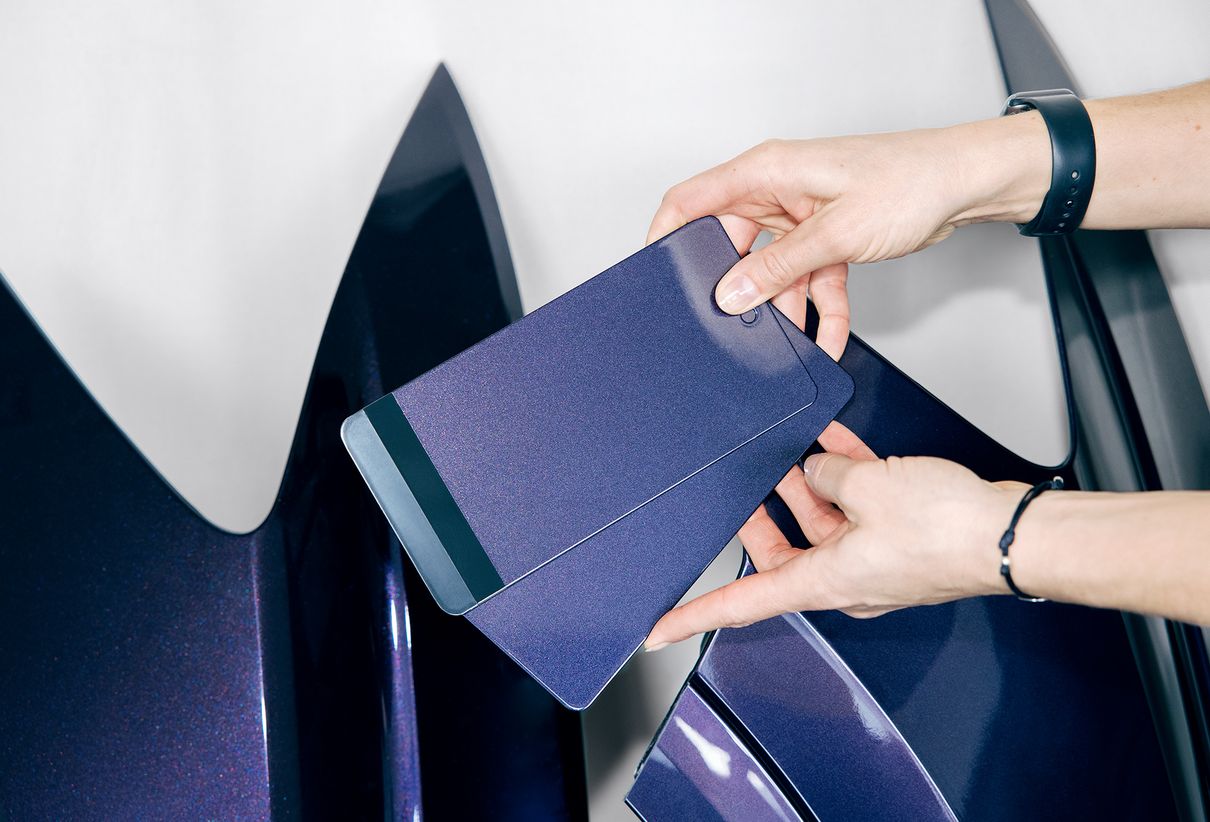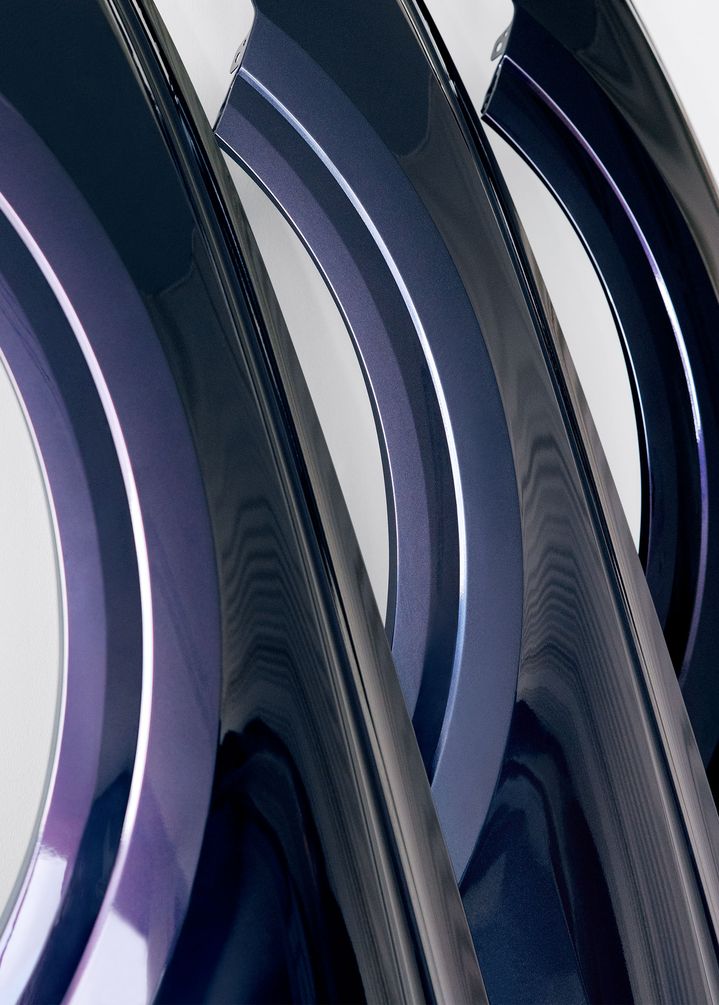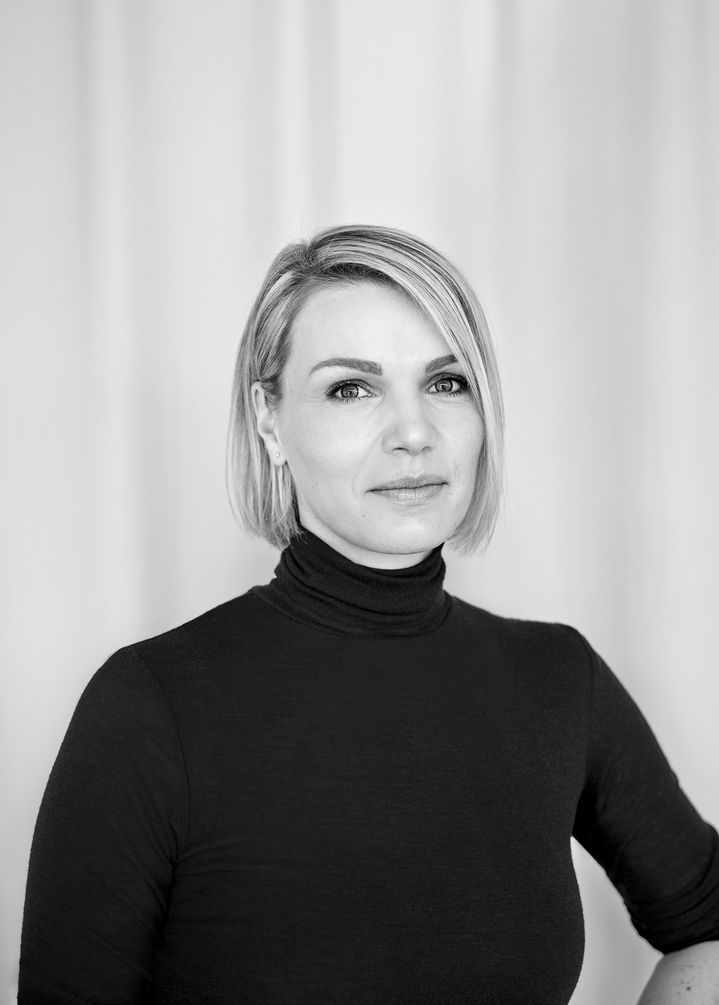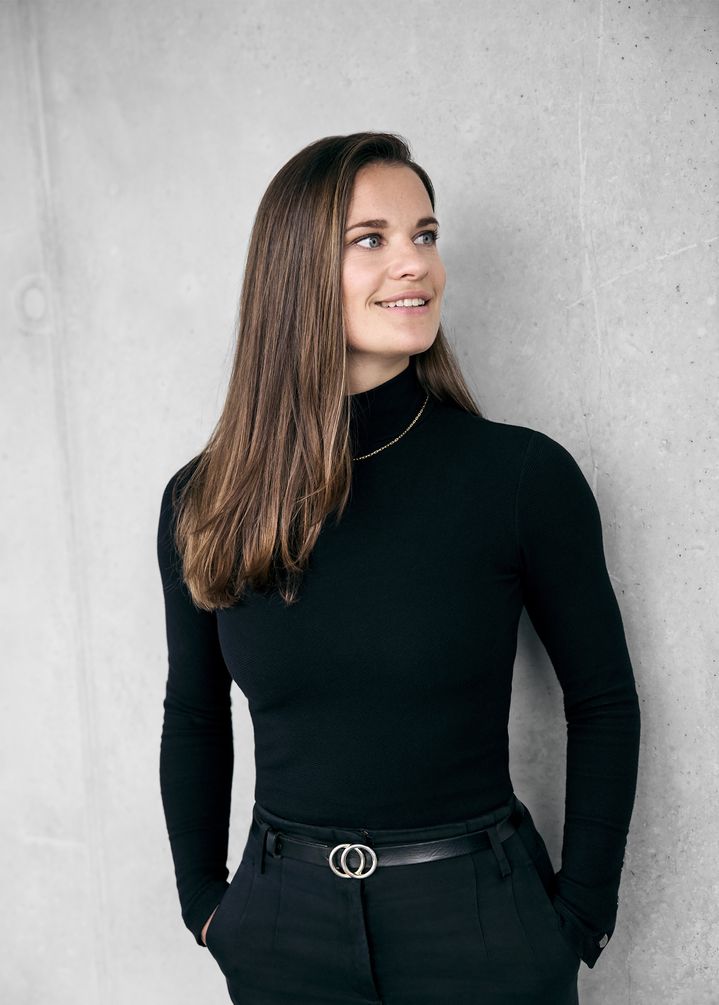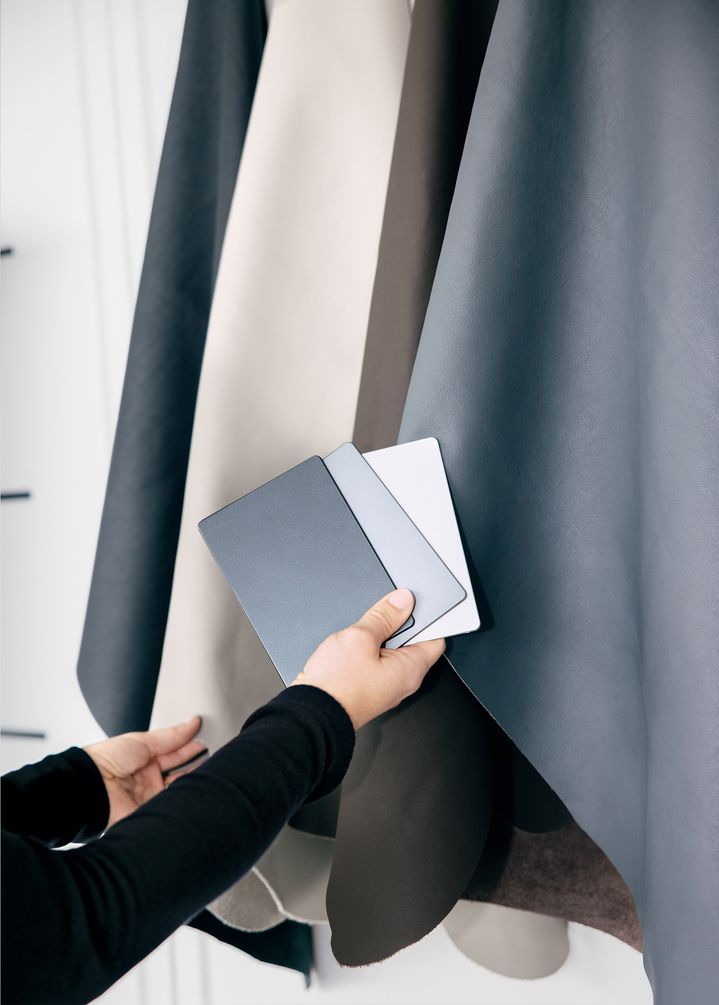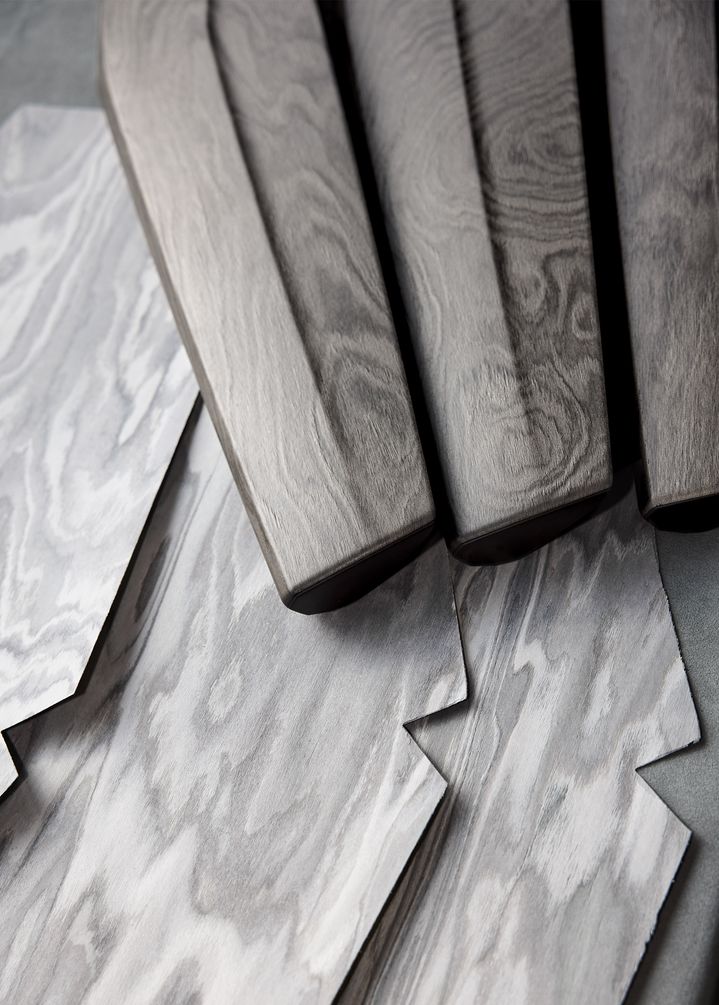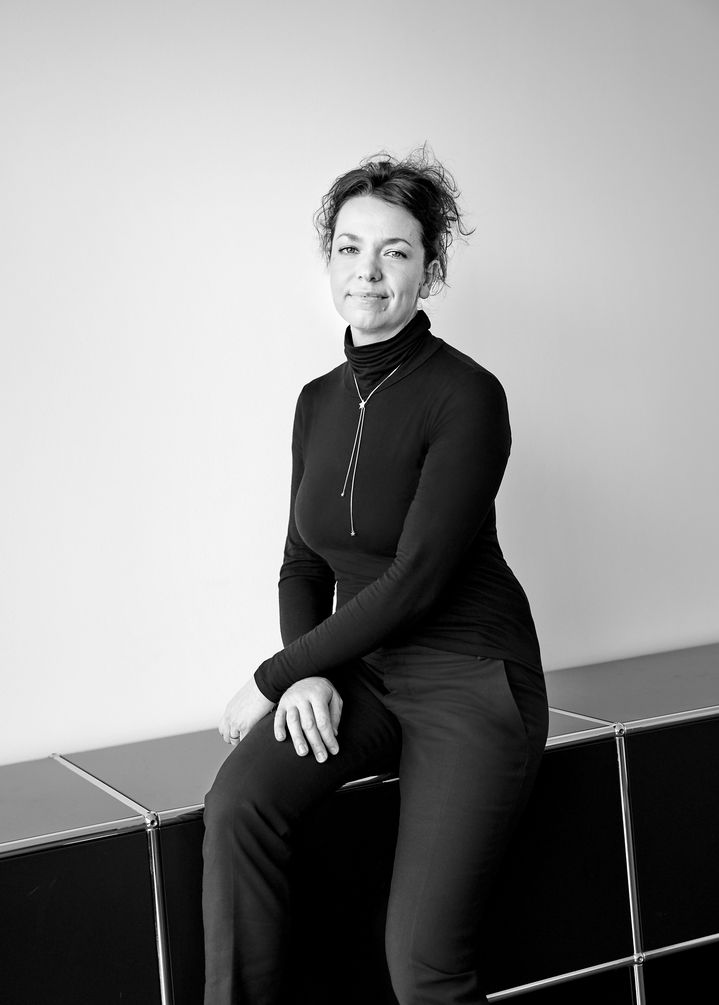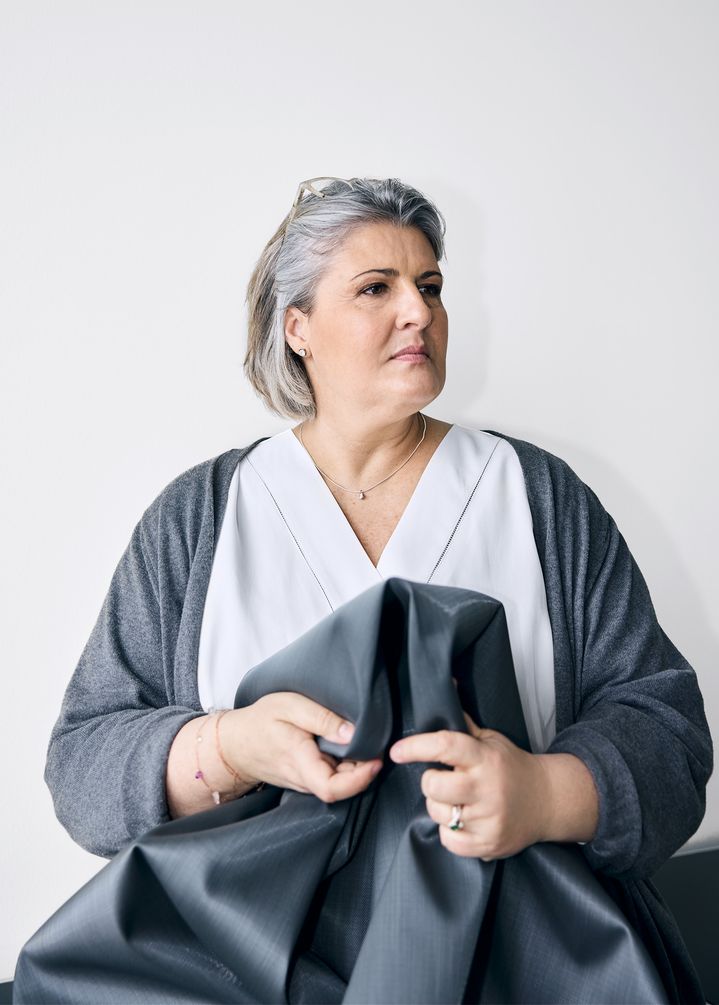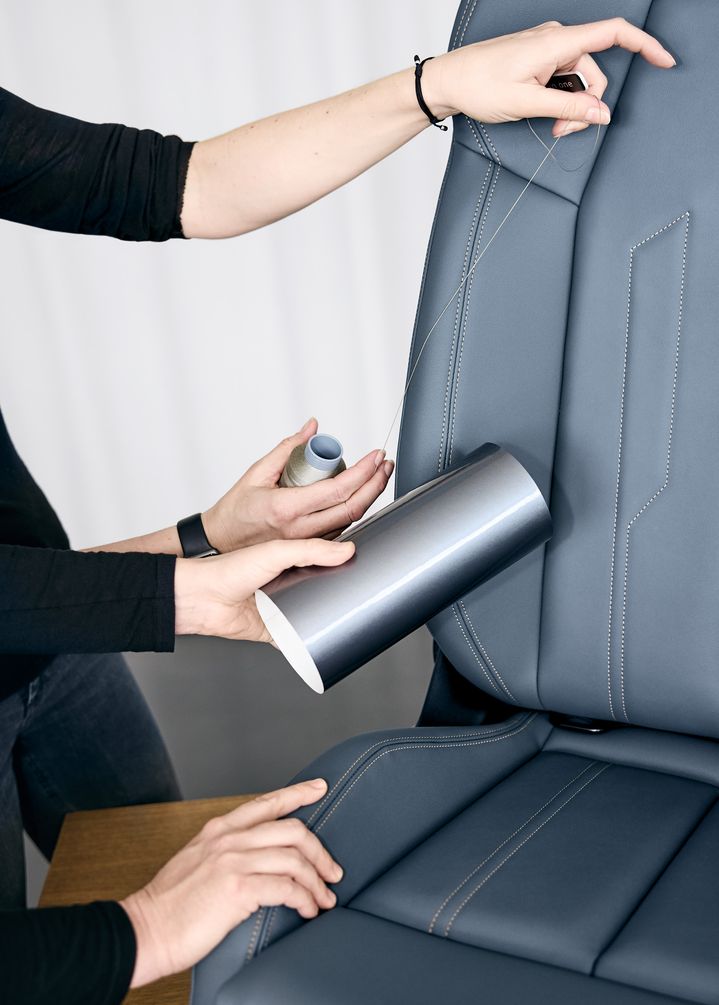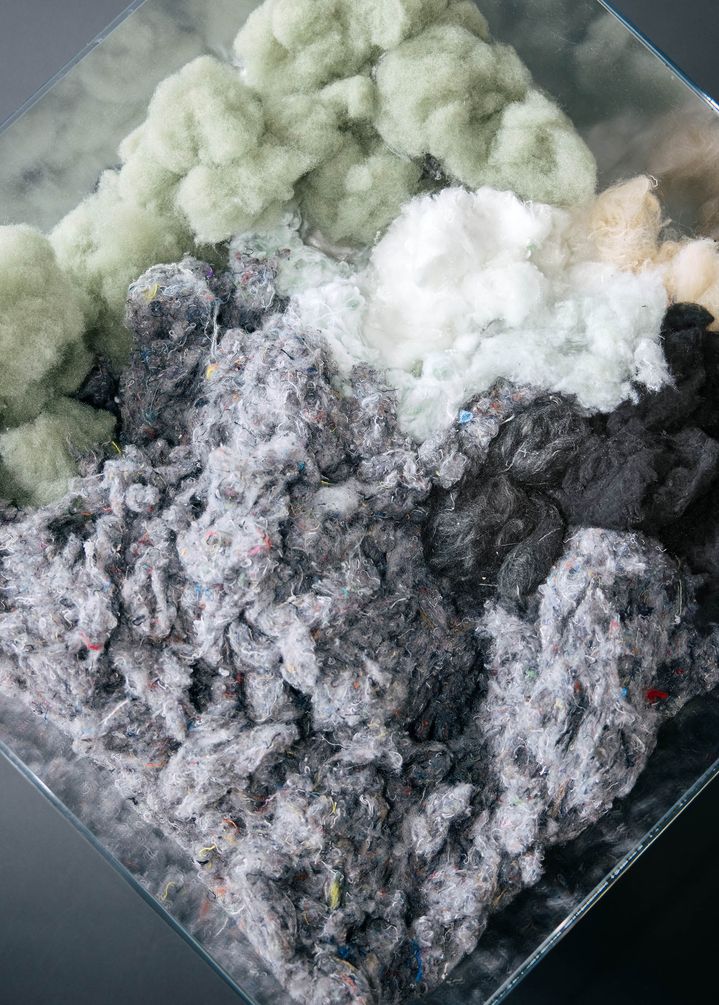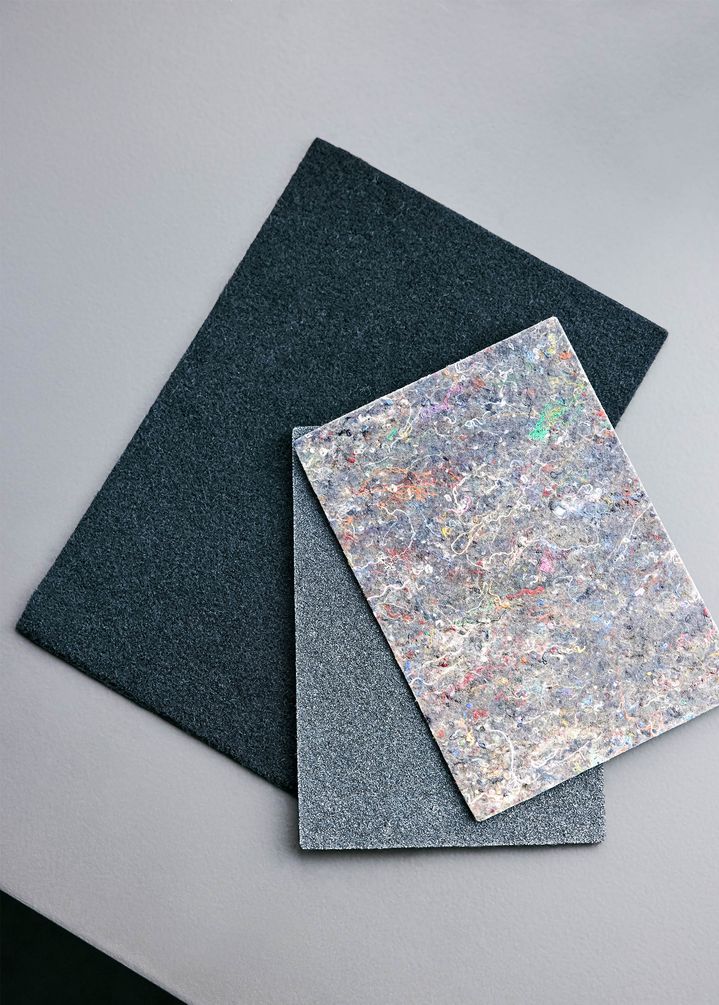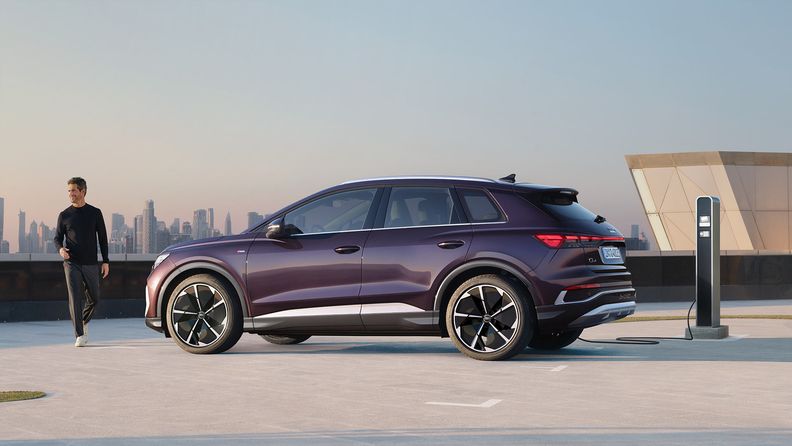“The perfect combination of sportiness and sophistication”
Audi Q4 e-tron: Power consumption (combined) in kWh/100 km: 19.5–16.2CO₂ emissions (combined) in g/km: 0CO₂ emission class: A
Stated specifications apply only in Germany and are not applicable in other regions.
Audi Q4 e-tron: Power consumption (combined) in kWh/100 km: 19.5–16.2CO₂ emissions (combined) in g/km: 0CO₂ emission class: A
Stated specifications apply only in Germany and are not applicable in other regions.
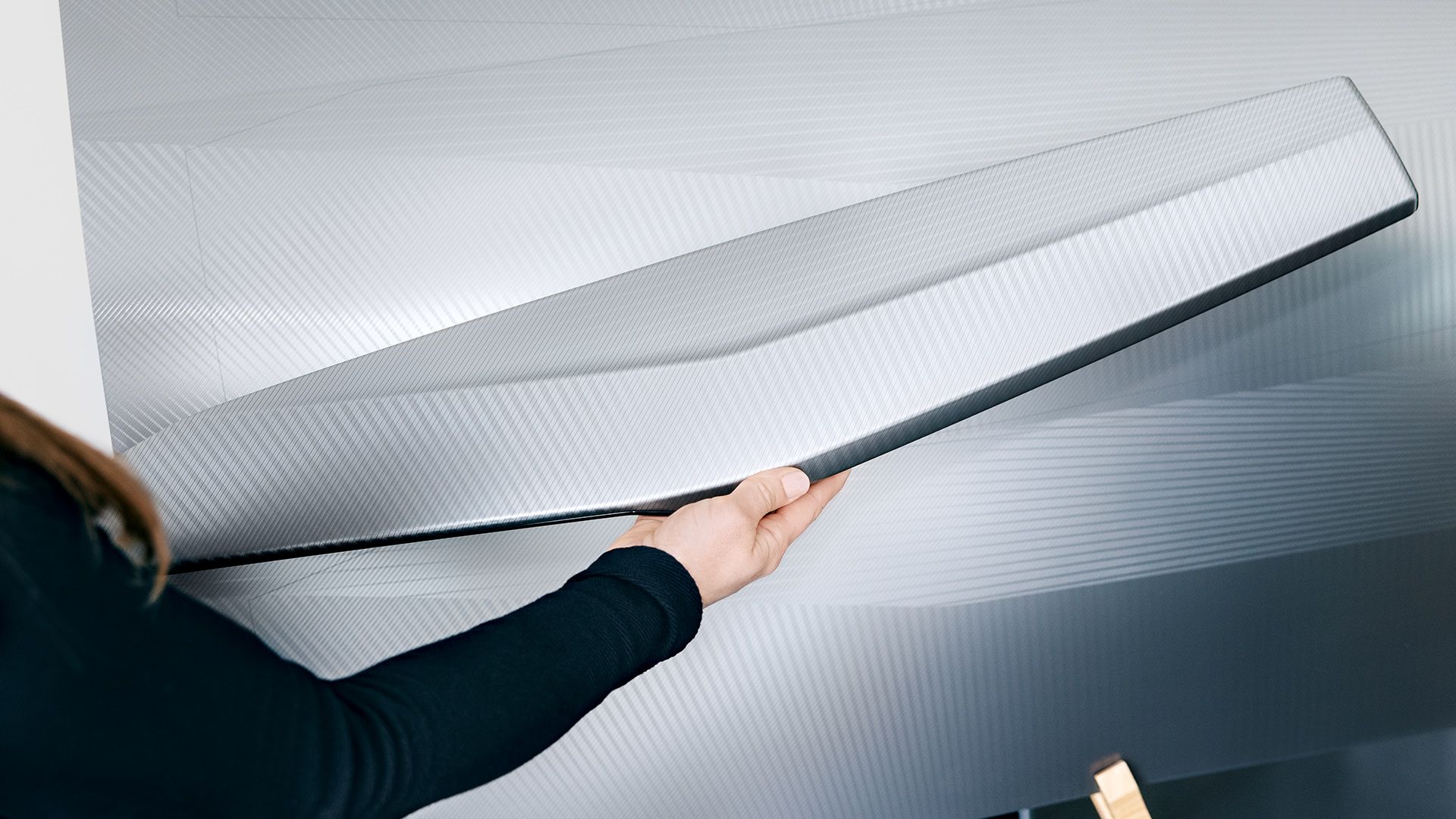
“Many people think that creativity is a snapshot – a flash of inspiration, an epiphany,” says Simona Falcinella, Head of Colour & Trim at Audi, as we meet her in the Audi Design Centre in Ingolstadt and immediately start quizzing her about the myriad of ideas that are possibly in the making right now – behind carefully closed doors. “When a job is based on creativity, the process requires a certain ‘Creative Resilience’: the combination of creative instinct with experience and competence. Only in this way can professionalism emerge. Creativity for us is a daily practice, a continuous exercise.”
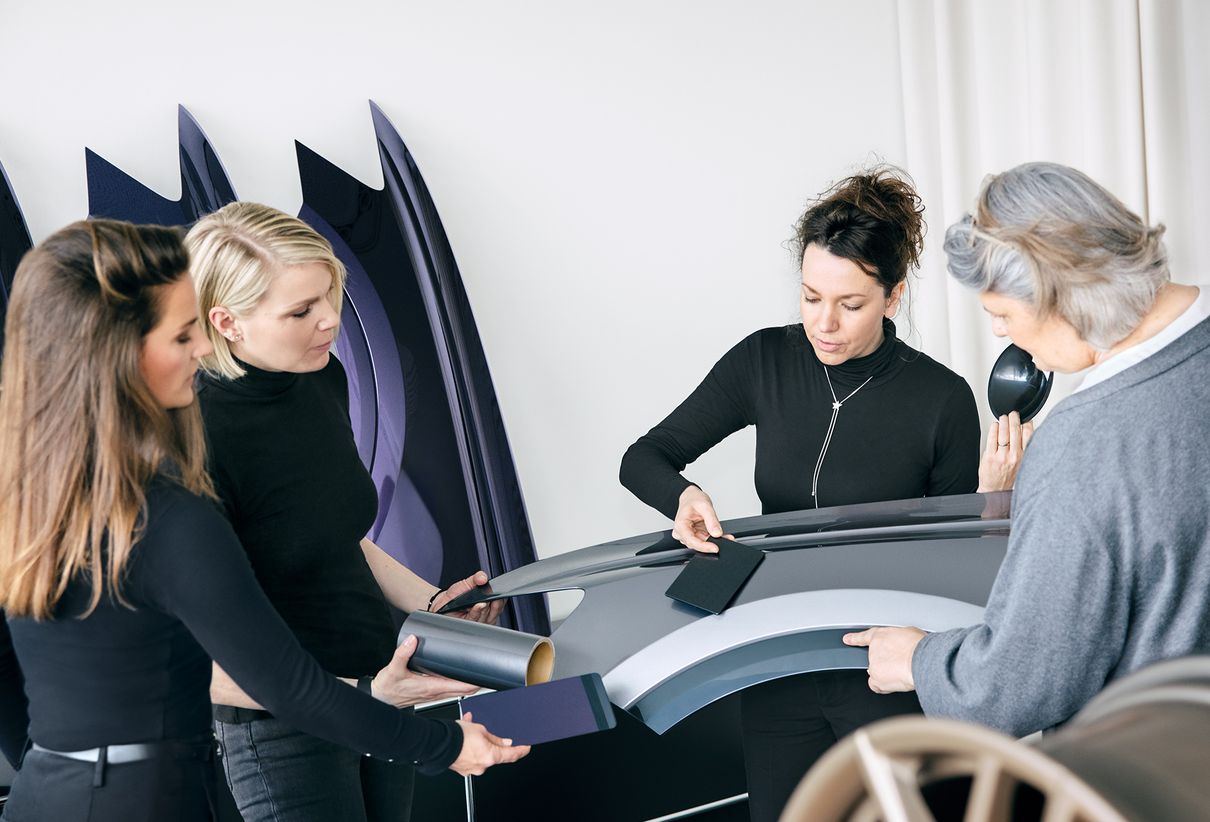
Behind the scenes of the Audi C&T Task Force
Designer Annika de Boer joins us. “What makes our team so special?” She ponders for a moment – there seem to be many possible answers to this question. “Although we each have our own identity, we all speak the same design language,” she finally says. “Yes, we actually have a common and very precise idea of what Audi is and how we can continue to innovate it in line with the brand’s identity,” Simona Falcinella adds.
The two ladies lead us past showrooms, desks, high shelves full of interior elements, and what is known as the “material library” into the innermost part of the Colour & Trim department, where we meet two other team members: Tiziana Mauri and Christina Wittmann. All four bring their expertise to the material and colour surface treatments of the Audi Q4 e-tron. Today they will present us with the highlights of the model range, impressing us with innovations that make the newest member of the Audi e-tron fleet a true trailblazer in the process.
But where exactly does the creative journey begin on a major project like the Audi Q4 e-tron fit-out? “With a conceptual idea, an intuition based on broad trend research that encompasses design, technology, and society. Then we elaborate these ideas, filter them, and translate them into a pure and distinctive Audi code,” says head of the Colour & Trim series projects Tiziana Mauri. “The entire team is involved in all phases of the project – from the first conceptual level to the final series development. We are all designers and material specialists at the same time. We zoom in and out, working on a micro and macro level.”
Audi Q4 e-tron: Power consumption (combined) in kWh/100 km: 19.5–16.2CO₂ emissions (combined) in g/km: 0CO₂ emission class: A
Stated specifications apply only in Germany and are not applicable in other regions.
Audi Q4 e-tron: Power consumption (combined) in kWh/100 km: 19.5–16.2CO₂ emissions (combined) in g/km: 0CO₂ emission class: A
Stated specifications apply only in Germany and are not applicable in other regions.
The creative process and its completion
The first practical step is to develop a colour and material concept that matches the specific character and message of the model. In this phase, the designers use mood boards and trend research as tools to visualise and underpin their ideas, intuitions, and research.
Then the concepts are turned into concrete samples: partly in the in-house Audi Design Center, which includes a paint shop and a saddlery for trim trials, and partly by external suppliers. “When we’re looking for the perfect colour, for instance,” Christina Wittmann explains, “we give the state of play, i.e. the preliminary colour data, to the paint shop, where it’s processed on a test piece.” The mudguard is particularly suitable for this because it has an exciting three-dimensionality and reflects the light very dynamically. The team agrees on this – and we are no longer surprised by the phalanx of body panels that is built up around us. For example, until the perfect new shade of purple was found for the Audi Q4 e-tron, various painted samples were inspected in direct comparison, the colour gradually further adjusted. More blue pigment, more metallic particles, less metallic, more red pigment ... Until, at some point, the team intuitively decided: now it’s right.
Audi Q4 e-tron: Power consumption (combined) in kWh/100 km: 19.5–16.2CO₂ emissions (combined) in g/km: 0CO₂ emission class: A
Stated specifications apply only in Germany and are not applicable in other regions.
Audi Q4 e-tron: Power consumption (combined) in kWh/100 km: 19.5–16.2CO₂ emissions (combined) in g/km: 0CO₂ emission class: A
Stated specifications apply only in Germany and are not applicable in other regions.
“
In search of the perfect colour, we have different shades processed on test pieces.”
Such selection and weighing processes are usually not limited to the Colour & Trim studio: synergies between the different departments play a role in every production step. And even if we are supposedly at the design finish line of the Audi Q4 e-tron aesthetic here today, the colour & trim process starts much earlier: as the definition of the interior and exterior shapes and surfaces progresses, the C&T designers arrive at an increasingly precise colour and material palette. This then represents the common thread that later turns the exterior and interior into a harmonious unit.
Once the right materials and colours have been found, the team continues to work closely with colleagues from Technical Development, the Quality department, marketing, and strategy experts until each material is ready for the market. “In the process, it is important to integrate our ideas into the different work areas as well as the wishes and requirements of all individual business areas into our concepts without losing our vision,” explains project manager Christina Wittmann. So all ideas are subjected to a feasibility check before they can be produced. No one works in an ivory tower here.
Audi Q4 e-tron: Power consumption (combined) in kWh/100 km: 19.5–16.2CO₂ emissions (combined) in g/km: 0CO₂ emission class: A
Stated specifications apply only in Germany and are not applicable in other regions.
Audi Q4 e-tron: Power consumption (combined) in kWh/100 km: 19.5–16.2CO₂ emissions (combined) in g/km: 0CO₂ emission class: A
Stated specifications apply only in Germany and are not applicable in other regions.
The Audi Q4 e-tron provides fresh impetus
Annika de Boer shows us a physically small but extremely important innovation that she worked on for two years: the Audi rings in the steering wheel. “After a long process of experimenting with gloss levels, colour gradations, and different brushings, we can now see the result on the road. That really feels good.”
Audi Q4 e-tron: Power consumption (combined) in kWh/100 km: 19.5–16.2CO₂ emissions (combined) in g/km: 0CO₂ emission class: A
Stated specifications apply only in Germany and are not applicable in other regions.
Audi Q4 e-tron: Power consumption (combined) in kWh/100 km: 19.5–16.2CO₂ emissions (combined) in g/km: 0CO₂ emission class: A
Stated specifications apply only in Germany and are not applicable in other regions.
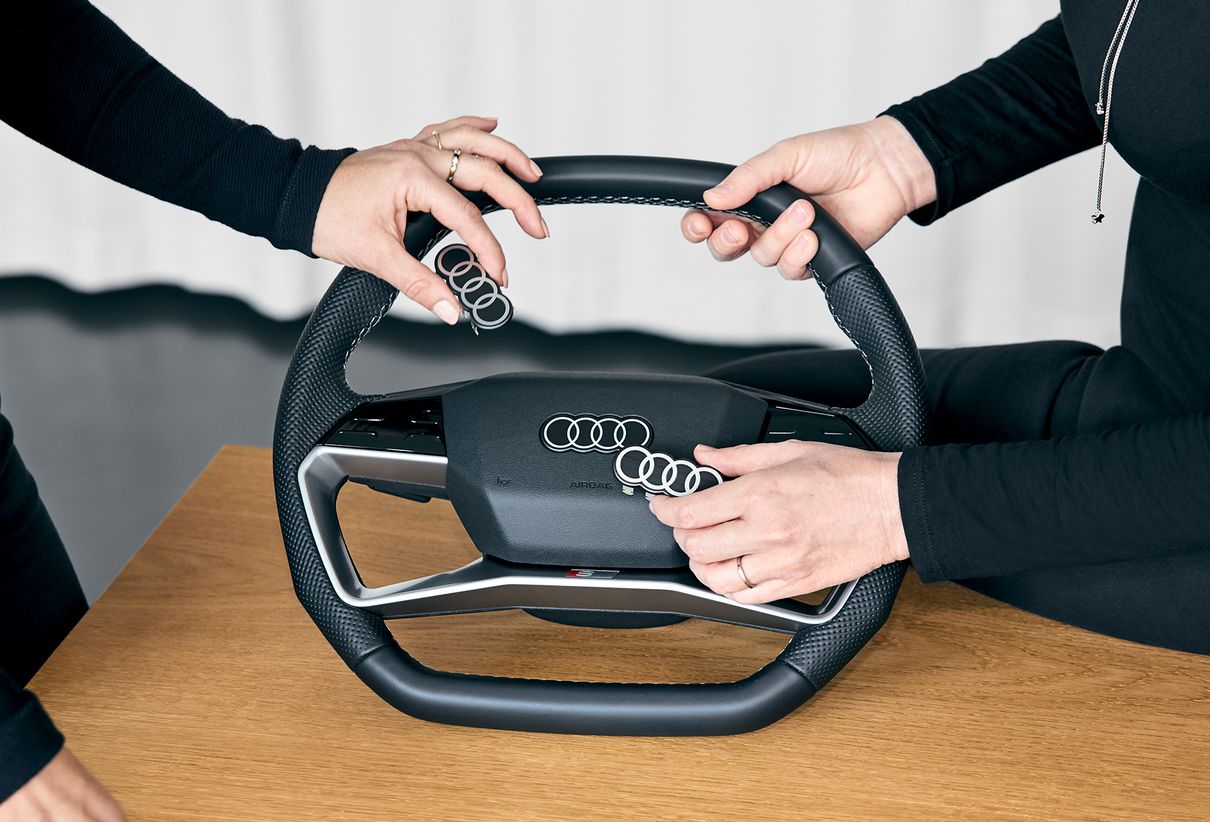
On the table next to us lies a large roll of wafer-thin material with a perfectly natural-looking tree grain. “The new premium surface ‘Lime Sediment Greyish Brown Naturelle’ is a technical veneer,” Annika de Boer explains. “We have developed it with a special focus on the 3D effect and the haptics. When you touch it, you can feel the three-dimensional wood structure, it’s really present.”
The designers present us with various production samples to show us where premium surfaces like this will later be found in the vehicle: Christina Wittmann and Tiziana Mauri handle half a dozen elongated dashboard parts that are somewhat reminiscent of toy swords.
Using a material sheet not yet drawn on a sample, Tiziana explains the aesthetic trick of another new surface option: “Aluminum Convergence Anthracite.” “To ensure that the area intended for it in the car doesn’t look too massive later on, we visually split the design in two – by working with two different graphics and brush directions that follow the shape of the component.”
“
We have put a special focus on 3D effects and a natural feel.”
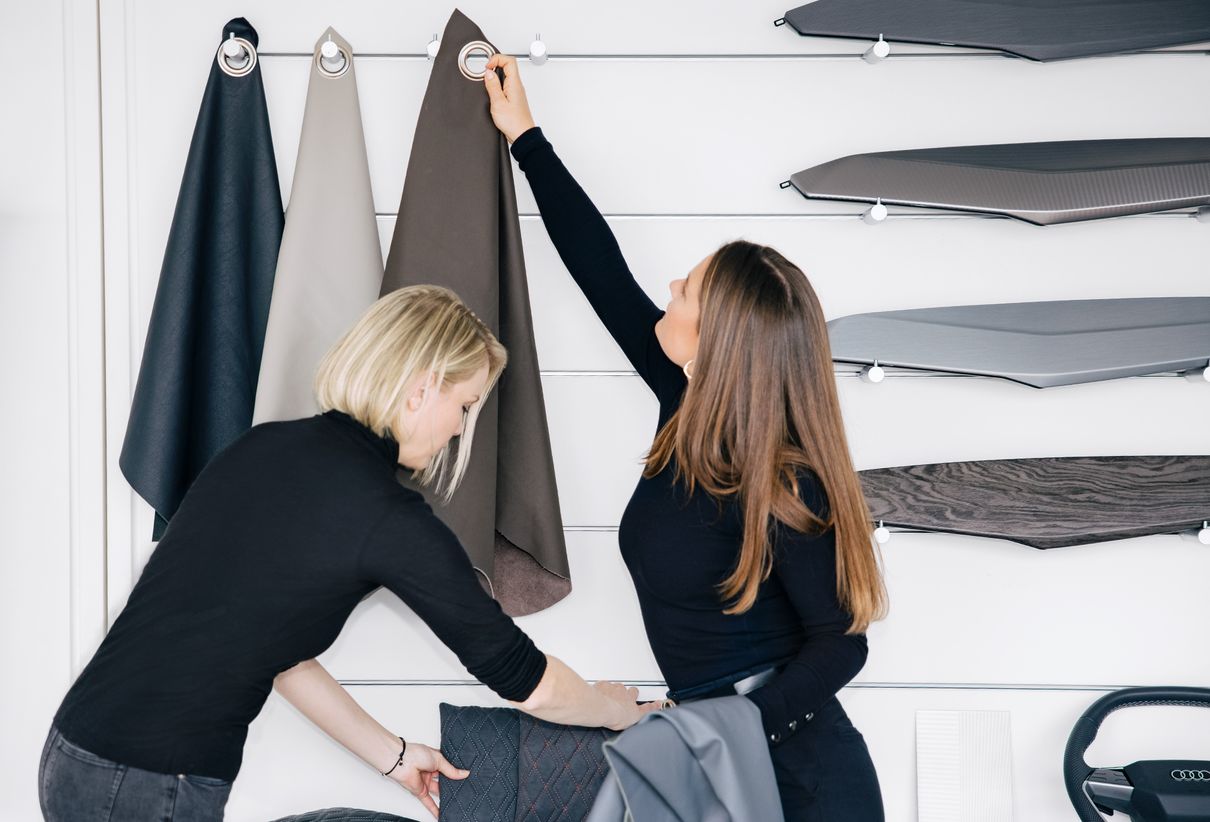
Meanwhile, Simona Falcinella drapes a large sheet of fabric in front of her, which she wants us to experience haptically. According to her, it is the most innovative piece of interior in the room. What we feel under our fingers is an almost black, solid fabric that looks sporty, pure, and luxurious in a certain way with its light shimmer – rather like the raw material for a futuristic haute couture design. “We call it Technikgewebe,” says Falcinella pragmatically. What is the fabric made of? “Partly discarded fabrics and PET bottles.”
Sustainability is a focus topic
In the Audi Q4 e-tron project, the team has implemented their claim of sustainability with particular passion – right down to the last detail. The carpet and the rear shelf for instance contain partly recycled material,. And to give us an idea of the local dimensions of the word “carpet,” the designers unceremoniously fetched a complete underbody cover from the production line in preparation for our visit. Later, as a car buyer, you will hardly notice this most extensive of all interior surfaces. All the more important, given the large amount of material, are the inner values. “The carpet backing is made from discarded fabrics from the textile industry, e.g. wool and cotton, maybe even your old jeans,” Annika explains, “and the soft upper material is partly made from recycled PET bottles and recycled granulate.”
Audi Q4 e-tron: Power consumption (combined) in kWh/100 km: 19.5–16.2CO₂ emissions (combined) in g/km: 0CO₂ emission class: A
Stated specifications apply only in Germany and are not applicable in other regions.
Audi Q4 e-tron: Power consumption (combined) in kWh/100 km: 19.5–16.2CO₂ emissions (combined) in g/km: 0CO₂ emission class: A
Stated specifications apply only in Germany and are not applicable in other regions.
Colour & courage
As we reluctantly say goodbye after so many haptic and visual experiences and pass by the now slightly disordered mudguard family one last time, we still want to know if the team can name a collective favourite colour in the Audi Q4 e-tron paint range. In fact, everyone agrees: the optional “Aurora Violet” is particularly original. “Purple is culturally associated with luxury and psychologically with the idea of transformation,” Simona Falcinella says, letting us in on the team’s research findings. “We are in a time of change, which Audi is commenting on with a bold colour. As such, the shade also fits ideally with the character of the Audi Q4 e-tron: a perfectly balanced combination of sporty vocation and sophistication.”
Audi Q4 e-tron: Power consumption (combined) in kWh/100 km: 19.5–16.2CO₂ emissions (combined) in g/km: 0CO₂ emission class: A
Stated specifications apply only in Germany and are not applicable in other regions.
Audi Q4 e-tron: Power consumption (combined) in kWh/100 km: 19.5–16.2CO₂ emissions (combined) in g/km: 0CO₂ emission class: A
Stated specifications apply only in Germany and are not applicable in other regions.
“
Purple is culturally associated with luxury and psychologically with transformation.”
